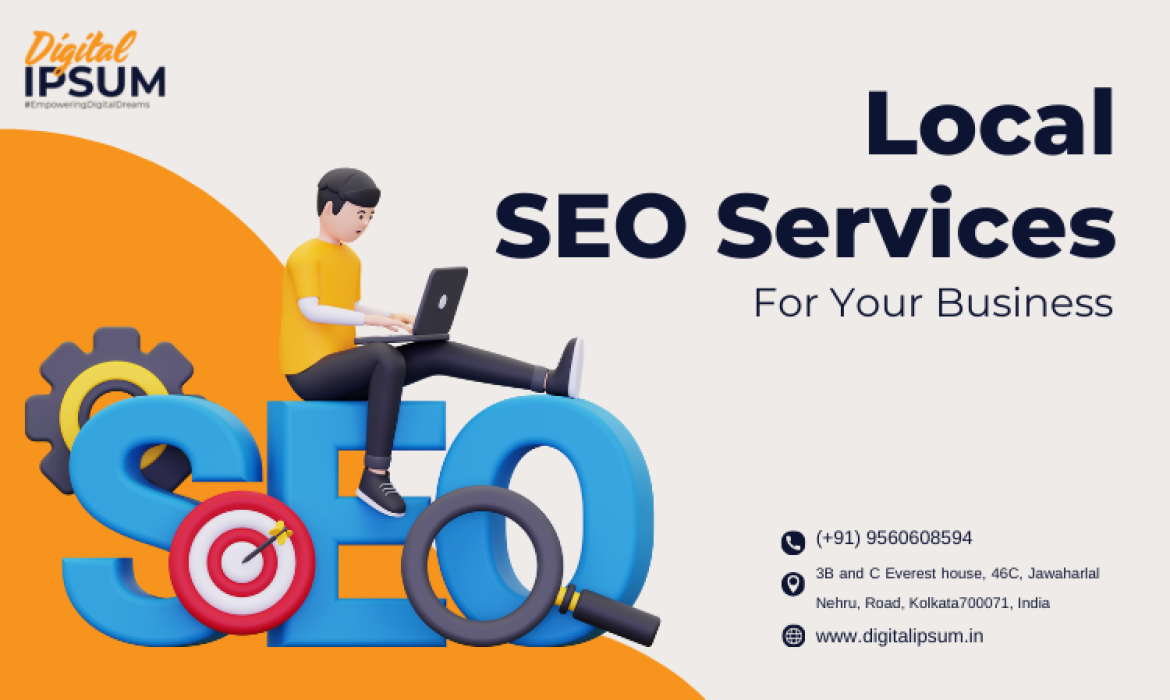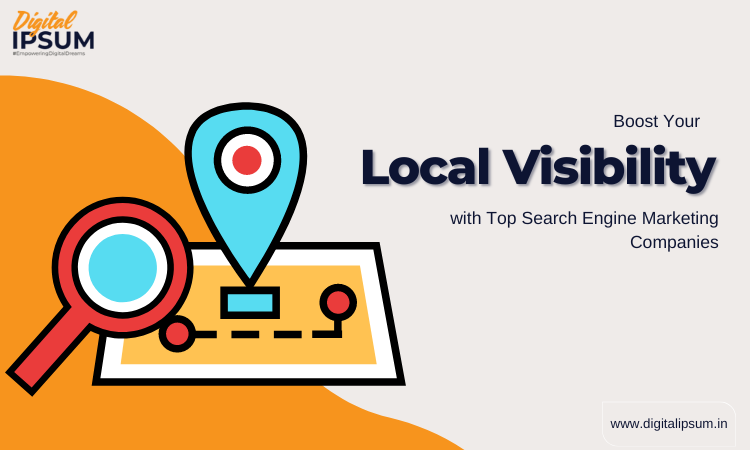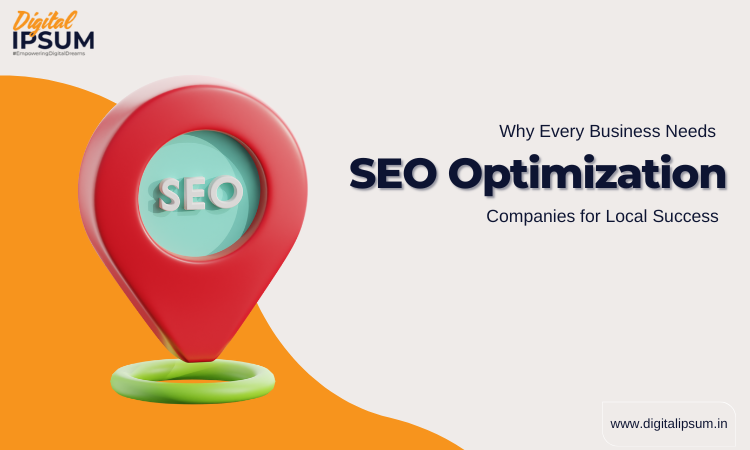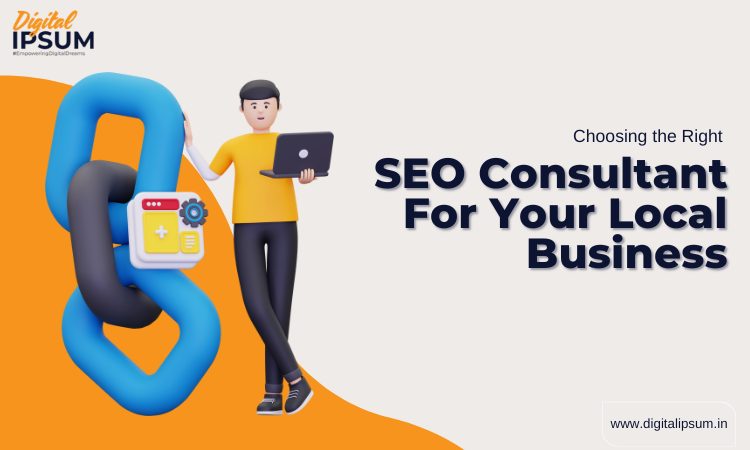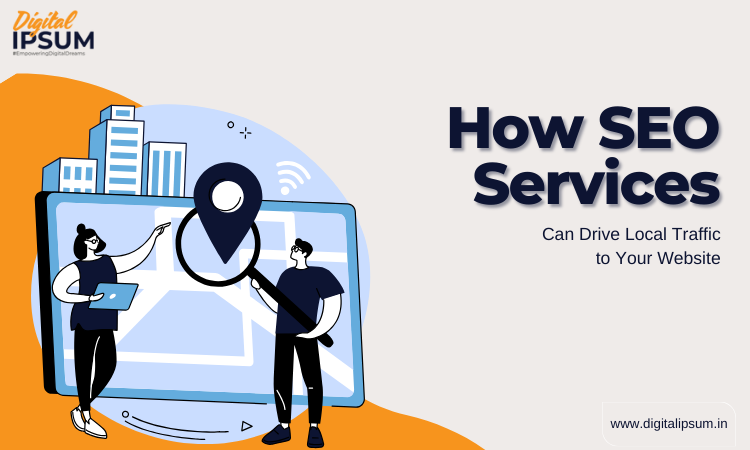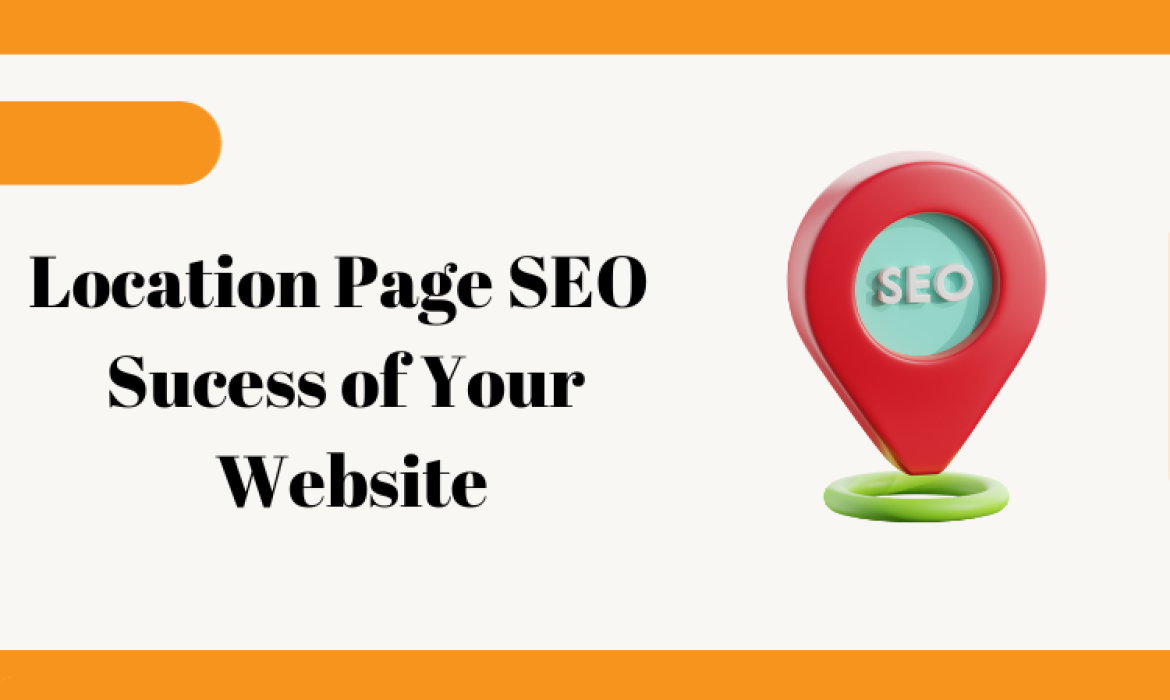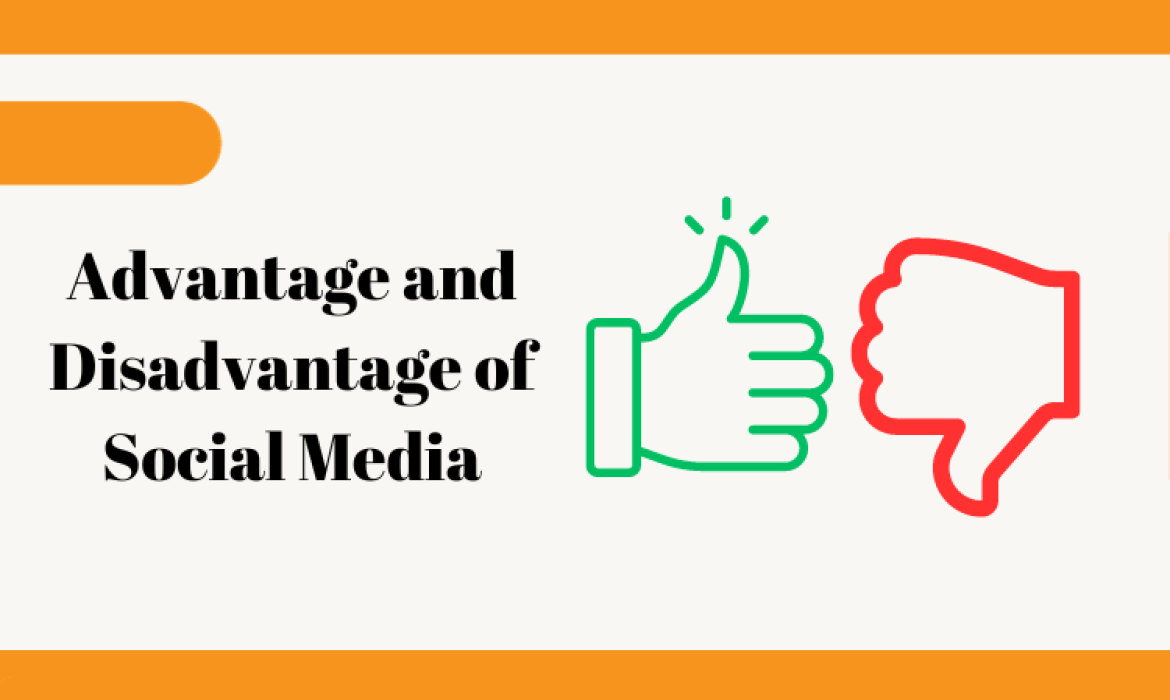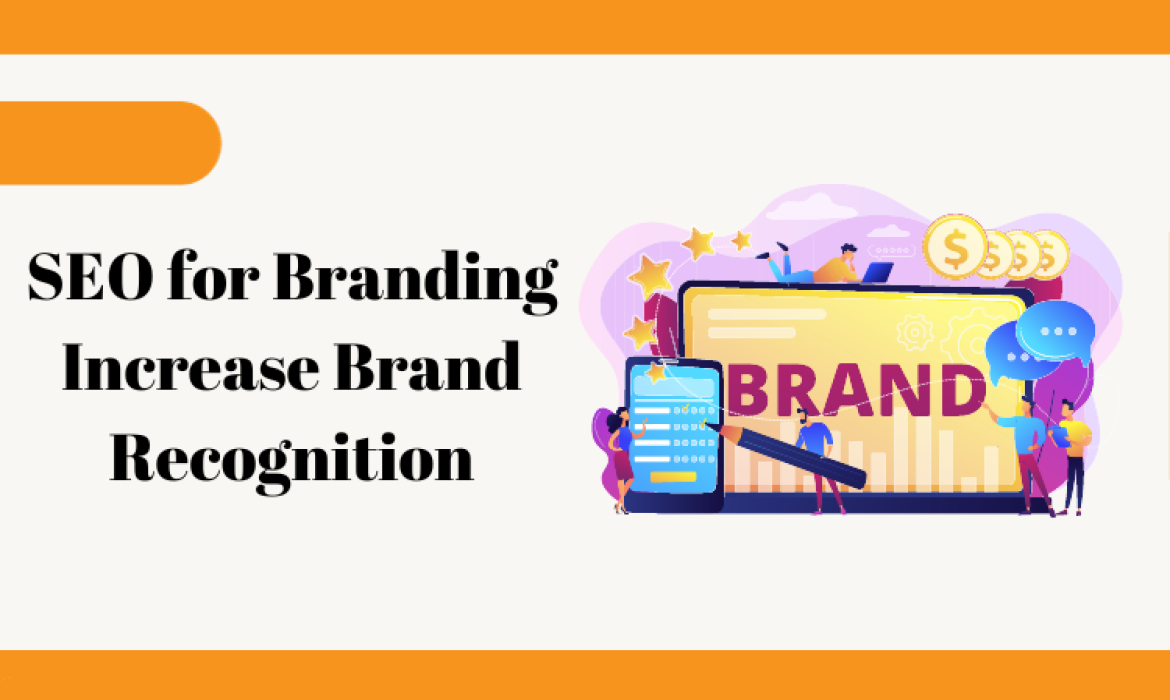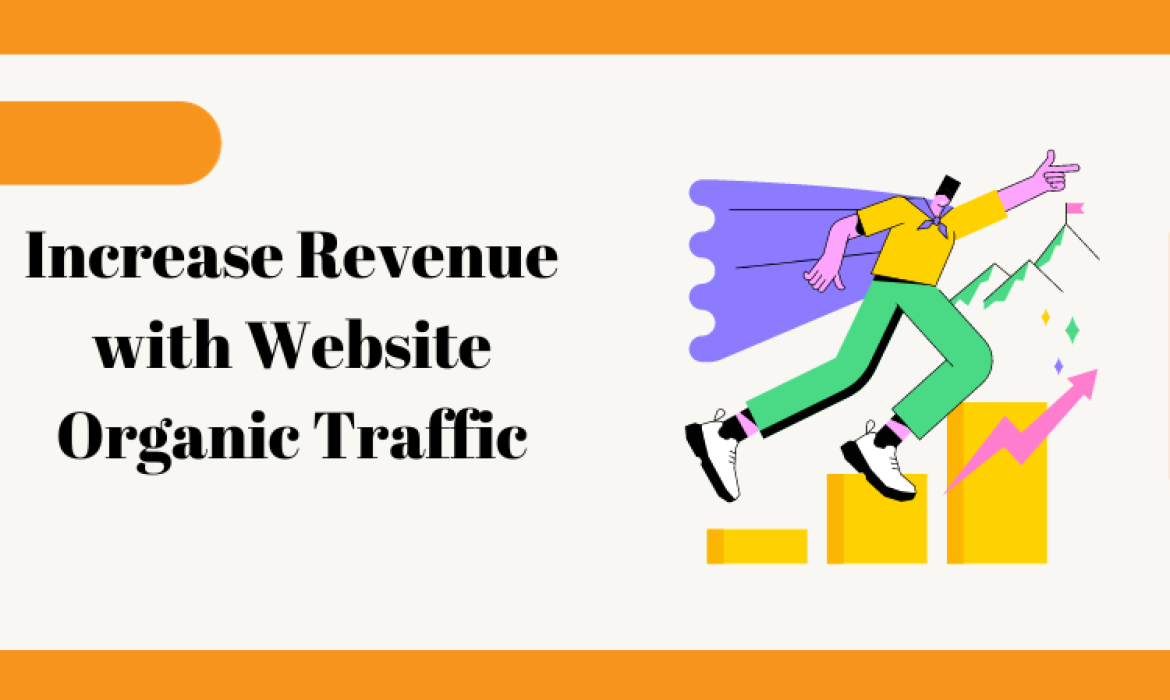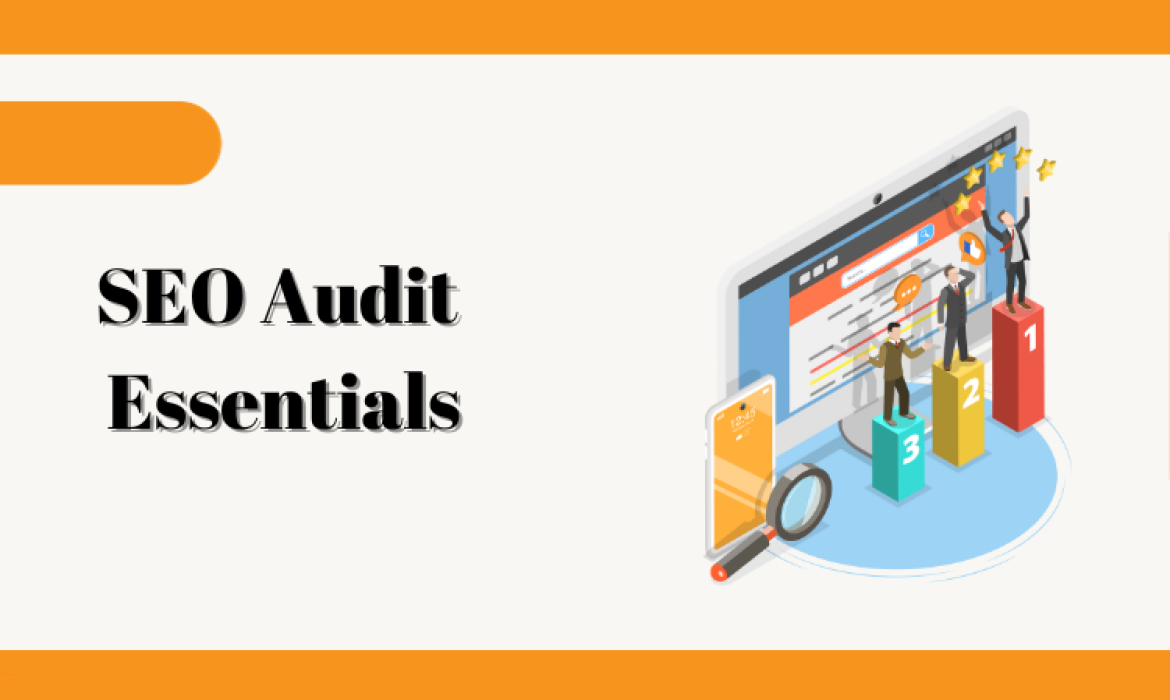Location Page SEO Is Essential to the Success of Your Website
In the rapidly evolving landscape of online marketing, search engine optimization (SEO) has become an indispensable tool for businesses aiming to enhance their online presence. One crucial aspect of SEO that holds particular significance for businesses with a physical presence is location-based SEO. This article delves into the fundamentals of location page SEO, exploring its impact on website success, key components for effective optimization, understanding local search ranking factors, and the undeniable benefits it brings to businesses.
The Impact of Location Page SEO on Website Success

Navigating the Local Landscape
In the digital age, consumers are increasingly relying on the internet to find local businesses. Whether it’s searching for the nearest coffee shop or locating a service provider in their vicinity, users turn to search engines like Google to streamline their decision-making process. This is where the importance of location page SEO comes into play.
Enhancing Visibility and Discoverability
Location page SEO is not just about ranking higher on search engine results pages (SERPs). It’s about ensuring that your business is easily discoverable by individuals in your target geographical area. By optimizing location-specific pages, businesses can improve their visibility, making it more likely for potential customers to find them when conducting local searches.
Competitive Advantage in Local Markets
For businesses operating in specific regions, mastering location page SEO provides a competitive edge. When consumers search for products or services within a particular location, businesses with well-optimized location pages are more likely to appear prominently in search results. This increased visibility translates into higher chances of attracting local customers, outshining competitors who may not have prioritized location-specific SEO strategies.
Key Components of Effective Location Page Optimization

Accurate Business Information
The foundation of effective location page SEO lies in providing accurate and up-to-date business information. This includes the business name, address, phone number (NAP), and other essential details. Ensuring consistency across online platforms is crucial for building trust with both users and search engines.
Compelling and Relevant Content
Quality content remains a key driver of SEO success, even in the realm of location-specific optimization. Crafting compelling content that speaks directly to the needs and interests of local audiences is essential. This not only aids in search engine rankings but also establishes a stronger connection with potential customers.
Optimized Meta Tags and Descriptions
Every location page should feature well-crafted meta tags and descriptions that incorporate relevant keywords. These meta elements provide a concise summary of the page’s content and play a crucial role in attracting clicks from search engine users.
Mobile-Friendly Design
As mobile usage continues to rise, ensuring that location pages are mobile-friendly is non-negotiable. Search engines prioritize mobile-friendly websites in their rankings, and a seamless mobile experience contributes to improved user satisfaction.
Understanding Local Search Ranking Factors

Google My Business (GMB) Optimization
One of the primary factors influencing local search rankings is the optimization of a business’s Google My Business listing. This involves providing detailed information, regularly updating business hours, and encouraging customer reviews. A well-optimized GMB profile can significantly boost a business’s visibility in local searches.
Local Citations and Backlinks
Building a strong online presence involves securing local citations and backlinks from reputable sources. Search engines view these citations as validations of a business’s legitimacy and relevance in a specific location, thereby impacting local search rankings positively.
User Reviews and Ratings
User-generated content, such as reviews and ratings, plays a crucial role in local search rankings. Positive reviews not only enhance a business’s reputation but also signal to search engines that it is a trusted and valuable resource for local users.
Benefits of Prioritizing Location Page SEO for Your Business
Targeted Customer Acquisition
By focusing on location-specific optimization, businesses can attract customers who are actively seeking products or services in their vicinity. This targeted approach to customer acquisition increases the likelihood of converting leads into actual customers.
Improved Conversion Rates
When users find a business that meets their local needs through a well-optimized location page, the chances of conversion are significantly higher. The convenience of a nearby solution often translates into quicker decision-making and, consequently, improved conversion rates.
Strengthening Community Connections
Prioritizing Location Page SEO fosters a sense of community connection. Local customers are more likely to engage with businesses that demonstrate a commitment to their specific location. This engagement extends beyond online interactions, contributing to a stronger bond between businesses and their local communities.
Best Practices for Crafting Location Pages That Drive Results
Introduction
Crafting effective location pages is a critical component of a successful local SEO strategy. In this article, we will explore the best practices for creating location pages that not only enhance your online presence but also drive tangible results for your business.
1. Strategic Keyword Research
Before diving into content creation, conduct thorough keyword research specific to your location. Identify the terms and phrases potential customers use when searching for products or services in your area. Incorporate these keywords naturally into your content, ensuring it aligns with user intent.
2. Localized and Relevant Content
Create content that speaks directly to the local audience. Highlight local events, landmarks, and community involvement. This not only makes your content more relatable but also signals to search engines that your business is closely tied to the geographical location.
3. Clear Navigational Structure
Ensure a user-friendly experience by implementing a clear navigational structure. Make it easy for visitors to find essential information, such as business hours, contact details, and location on a map. A well-organized structure contributes to a positive user experience, a factor search engines consider in rankings.
Optimizing Google My Business for Local Visibility
Leveraging the Power of Google My Business (GMB)
Google My Business is a cornerstone of local SEO, offering businesses the opportunity to appear in local search results and on Google Maps. Optimizing your GMB profile is crucial for enhancing local visibility.
1. Complete and Accurate Information
Fill out every section of your GMB profile with accurate and comprehensive information. This includes your business name, address, phone number, website, business hours, and categories. The more information you provide, the better Google can understand and showcase your business to local users.
2. High-Quality Visuals
Images play a significant role in attracting users’ attention. Upload high-quality images that showcase your business, products, and services. Include photos of the interior, exterior, staff, and any special offerings. Visual appeal can positively impact user engagement and perception.
3. Encourage and Respond to Reviews
Positive reviews build trust and credibility. Encourage satisfied customers to leave reviews on your GMB profile. Respond promptly to both positive and negative reviews, demonstrating your commitment to customer satisfaction. Engaging with reviews can contribute to improved local rankings.
Case Studies: Successful Implementation of Location Page SEO
Learning from Real-World Examples
Examining case studies provides valuable insights into the practical application of location page SEO strategies. Here, we explore examples of businesses that have successfully implemented these strategies to drive results.
1. Local Business A: Targeted Content Creation
Local Business A, a boutique coffee shop, implemented a content strategy that focused on creating location-specific blog posts. These posts highlighted community events, local partnerships, and unique aspects of the neighborhood. This approach not only boosted organic traffic but also fostered a strong sense of community engagement.
2. Service Provider B: GMB Optimization and Reviews
Service Provider B, a local plumbing company, prioritized Google My Business optimization. They regularly updated their profile with accurate information, posted relevant photos, and actively encouraged satisfied customers to leave reviews. This resulted in improved local visibility and a steady influx of service inquiries.
Common Mistakes to Avoid in Location Page Optimization

Pitfalls to Steer Clear of
While optimizing location pages, it’s essential to be aware of common mistakes that can hinder your success. Avoiding these pitfalls ensures that your efforts contribute positively to your local SEO strategy.
1. Inconsistent NAP Information
Maintain consistency in your business’s name, address, and phone number (NAP) across all online platforms. Inconsistencies can confuse both users and search engines, impacting your local search rankings negatively.
2. Ignoring Mobile Optimization
With an increasing number of users accessing information on mobile devices, neglecting mobile optimization is a critical mistake. Ensure that your location pages provide a seamless experience across various devices, contributing to improved user satisfaction and search engine rankings.
3. Overlooking Local Keyword Variations
While targeting specific keywords is crucial, it’s equally important to consider variations that users may employ in local searches. Overlooking these variations can result in missed opportunities to capture a broader local audience.
Monitoring and Measuring the Success of Your Location Page SEO Strategy

Metrics and Analytics for Success Evaluation
An effective location page SEO strategy doesn’t end with implementation; it requires ongoing monitoring and measurement. Understanding the key metrics to track ensures that you can assess the success of your efforts and make data-driven adjustments.
1. Local Search Rankings
Regularly monitor your business’s local search rankings for target keywords. Tools like Google Analytics and specialized SEO platforms can provide insights into your position on SERPs, helping you identify trends and opportunities.
2. User Engagement Metrics
Track user engagement on your location pages. Analyze metrics such as bounce rate, time on page, and click-through rate. Positive engagement metrics indicate that your content resonates with your audience and contributes to a positive user experience.
3. Conversion Rates and Goal Completions
The impact of your location page SEO strategy on business objectives is what ultimately determines its effectiveness. Track conversion rates and goal completions, whether they involve form submissions, online purchases, or other desired actions. This data helps you assess the direct impact of your local SEO efforts on your business’s bottom line.
Conclusion
Crafting location pages that drive results requires a combination of strategic planning, optimization techniques, and continuous evaluation. By following best practices, optimizing Google My Business effectively, learning from successful case studies, avoiding common mistakes, and monitoring key metrics, businesses can establish a robust foundation for local SEO success. As the digital landscape evolves, adapting and refining your location page SEO strategy ensures that your business remains visible, relevant, and competitive in the local market.
Advantages and Disadvantages of Social Media
Introduction
In the era of digital connectivity, social media has emerged as a transformative force, reshaping the way we communicate, share information, and interact with the world. This article explores the nuanced landscape of social media, examining both its advantages and disadvantages.
A. Definition of Social Media
Social media refers to online platforms and technologies that enable individuals and communities to share, create, and exchange information, ideas, and multimedia content. It encompasses a wide range of websites and applications designed for social interaction.
B. Pervasiveness of Social Media in Society
In contemporary society, the influence of social media is ubiquitous. People worldwide use platforms such as Facebook, Twitter, Instagram, and LinkedIn to connect, share experiences, and engage with content. The impact of social media on communication, information dissemination, and networking is profound.
Advantages of Social Media
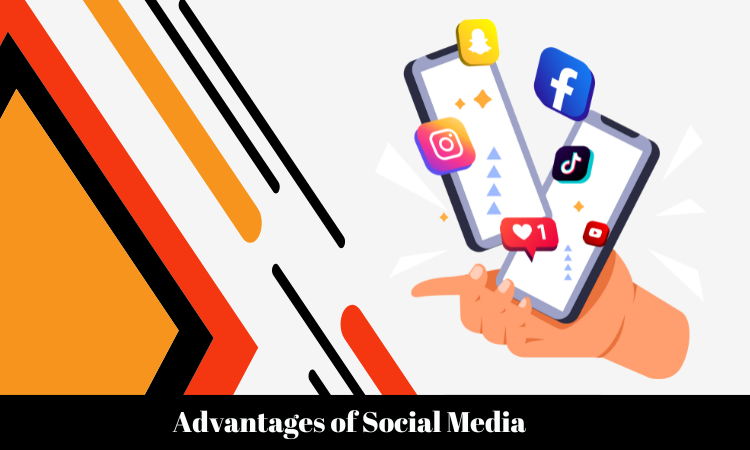
A. Connectivity and Communication
1. Global Reach
Social media breaks down geographical barriers, allowing individuals to connect with others globally. This unprecedented reach facilitates cross-cultural communication, fostering a sense of global interconnectedness.
2. Instant Messaging and Communication
The real-time nature of social media platforms enables instant communication. Whether through direct messaging or public posts, individuals can share thoughts, updates, and messages with unparalleled speed.
B. Information and Awareness
1. News and Updates
Social media serves as a rapid news dissemination channel, keeping users informed about current events in real time. This instant access to news is crucial for staying updated on global affairs.
2. Educational Resources
Educational content is readily available on social media platforms. From informative articles to online courses, users can access a wealth of educational resources, promoting continuous learning.
C. Networking and Professional Opportunities
1. Job Searches and Recruitment
Social media platforms like LinkedIn play a pivotal role in professional networking and job searches. Job seekers can connect with recruiters, and employers can find suitable candidates efficiently.
2. Business Networking
For businesses, social media offers a powerful tool for networking and building relationships with clients, partners, and other industry professionals. It provides a platform for brand promotion and customer engagement.
Disadvantages of Social Media

A. Privacy Concerns
1. Data Security Issues
Social media platforms are vulnerable to data breaches, leading to potential privacy violations. Users’ personal information may be at risk, raising concerns about the security of online data.
2. Personal Information Exposure
Individuals may unknowingly expose sensitive personal information on social media, increasing the risk of identity theft and other forms of exploitation.
B. Addiction and Mental Health
1. Social Media Addiction
Excessive use of social media can contribute to addiction, negatively impacting individuals’ daily lives. The constant need for online validation may lead to addictive behaviours.
2. Impact on Mental Well-being
Studies suggest a correlation between heavy social media use and mental health issues such as anxiety and depression. Comparisons, cyberbullying, and the pressure for online perfection can contribute to mental health challenges.
C. Spread of Misinformation
1. Fake News and Rumors
The rapid spread of fake news on social media poses a significant threat to public discourse. False information can easily go viral, influencing opinions and behaviours.
2. Filter Bubbles and Echo Chambers
Social media algorithms may create filter bubbles, limiting users’ exposure to diverse perspectives. This can lead to the reinforcement of existing beliefs and the formation of echo chambers.
In conclusion, while social media offers numerous advantages, it is essential to navigate its landscape with caution. Understanding the potential pitfalls allows users to make informed choices, harnessing the benefits of social media while mitigating its drawbacks.
Social Media and Relationships

A. Impact on Personal Relationships
1. Family Dynamics
Social media has both positive and negative effects on family dynamics. On the positive side, it allows family members to stay connected, share updates, and celebrate milestones, regardless of geographical distances. However, the constant exposure to each other’s online lives can also lead to misunderstandings and privacy concerns.
2. Friendships
Social media platforms offer a convenient way to maintain and strengthen friendships. Users can easily stay in touch, share experiences, and engage in conversations. On the flip side, the digital nature of these interactions may lack the depth and nuance of face-to-face communication, potentially impacting the quality of friendships.
B. Cyberbullying and Online Harassment
1. Negative Social Interactions
The anonymity provided by social media can lead to negative social interactions, including cyberbullying and online harassment. Individuals may face criticism, bullying, or even threats, affecting their mental well-being and relationships.
2. Strategies for Prevention and Intervention
To address cyberbullying and online harassment, proactive strategies are essential. Social media platforms, parents, and educators play a crucial role in implementing preventive measures and intervening when negative interactions occur. Education and awareness campaigns are also effective tools in fostering a safer online environment.
Business and Marketing on Social Media
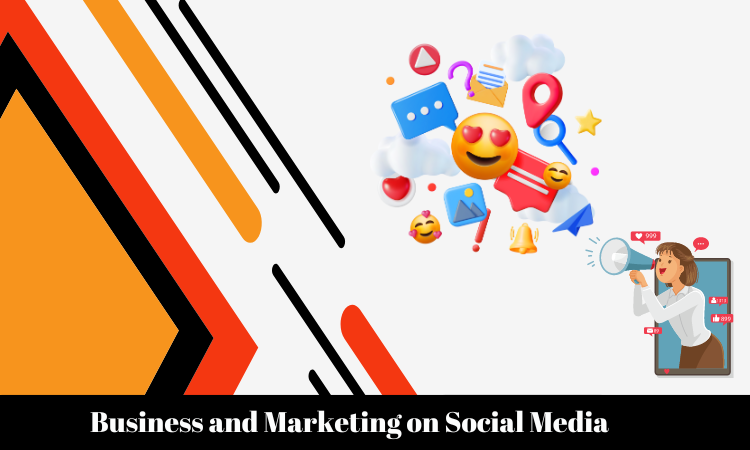
A. Opportunities for Businesses
1. Marketing and Branding
Social media provides businesses with unprecedented opportunities for marketing and branding. Through targeted campaigns, businesses can reach a vast audience, increase brand visibility, and engage with potential customers in innovative ways.
2. Customer Engagement
Businesses can leverage social media to engage directly with their customers. Through feedback, comments, and messages, companies can gain valuable insights, build customer loyalty, and enhance their products or services.
B. Challenges for Businesses
1. Negative Publicity
The viral nature of social media means that negative publicity can spread rapidly. A single incident or negative customer experience can escalate quickly, potentially harming a company’s reputation.
2. Managing Online Reputation
Effectively managing online reputation is crucial for businesses. Social media monitoring tools, prompt responses to customer feedback, and transparent communication are essential components of maintaining a positive online image.
In conclusion, social media’s impact on relationships and business is multifaceted. While it enhances connectivity and provides businesses with unprecedented opportunities, careful navigation and awareness of potential challenges are essential for individuals and companies alike. By understanding the advantages and disadvantages, users can make informed decisions about their online presence and engagement.
Regulation and Ethical Considerations
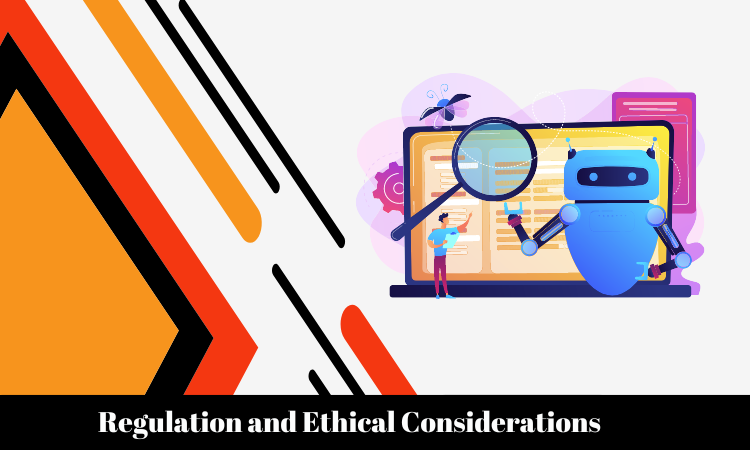
A. Government Regulation
1. Privacy Laws
As social media platforms handle vast amounts of personal data, governments worldwide have implemented privacy laws to protect users. Regulations such as the General Data Protection Regulation (GDPR) in Europe aim to safeguard individuals’ privacy rights, giving users more control over their personal information.
2. Content Moderation
Governments also play a role in regulating the content disseminated on social media. Policies addressing hate speech, misinformation, and explicit content vary globally. Social media platforms are increasingly pressured to implement robust content moderation mechanisms to ensure a safe and responsible online environment.
B. Ethical Use of Social Media
1. Responsible Sharing
Ethical considerations in social media use extend to individual behaviour. Responsible sharing involves thoughtful consideration before posting content, respecting the privacy of others, and avoiding the dissemination of false information. Users have a role in maintaining a positive and trustworthy online community.
2. Cyber Ethics
Cyber ethics involves navigating the digital realm with integrity and responsibility. This encompasses respectful online behaviour, adherence to laws and regulations, and the promotion of positive digital citizenship. Understanding the consequences of one’s actions in the online space is crucial for fostering a healthy and ethical digital culture.
Conclusion
A. Summary of Key Points
Social media, with its advantages and disadvantages, is a dynamic force that has become deeply ingrained in modern society. Challenges like privacy concerns, cyberbullying, and the spread of false information balance out the benefits, which include global connectivity, instant communication, and business opportunities.
B. Balancing the Pros and Cons of Social Media
As we navigate the digital landscape, it’s essential to strike a balance between reaping the benefits of social media and mitigating its potential drawbacks. Government regulations and ethical considerations provide a framework for responsible use, emphasizing the need for users, businesses, and platforms to collaborate in creating a positive and secure online environment.
In conclusion, social media’s impact is far-reaching, influencing relationships, businesses, and societal norms. By understanding and addressing the regulatory and ethical dimensions, we can foster a digital culture that harnesses the positive aspects of social media while mitigating its challenges.
FAQs (Frequently Asked Questions)
How can individuals protect their privacy on social media?
Individuals can safeguard their privacy by regularly reviewing and adjusting privacy settings, avoiding oversharing personal information, and being cautious about accepting friend requests or followers from unknown entities.
What are the signs of social media addiction, and how can it be addressed?
Signs of social media addiction include spending excessive time online, neglecting real-life responsibilities, and experiencing anxiety when not using social media. Addressing addiction involves setting usage limits, taking breaks, and seeking professional support if needed.
How can businesses effectively manage their online reputation on social media?
Businesses can manage their online reputation by actively monitoring social media mentions, responding promptly to customer feedback, and transparently addressing any issues. Proactive engagement and the consistent delivery of quality products or services contribute to a positive online image.
What role do governments play in regulating social media?
Governments regulate social media through privacy laws and content moderation policies. These regulations aim to protect user data, curb the spread of harmful content, and ensure a safe online environment.
How can users contribute to a positive online community?
Users can contribute to a positive online community by practising responsible sharing, promoting respectful interactions, and being critical consumers of information. Reporting inappropriate content and supporting anti-cyberbullying initiatives also play vital roles.
In conclusion, the advantages and disadvantages of social media underscore its transformative influence on society. By fostering responsible use, ethical engagement, and a balanced approach to its myriad facets, we can harness the positive aspects of social media while mitigating its challenges.
SEO for Branding: Using SEO to Increase Brand Recognition
In the dynamic world of digital marketing, Search Engine Optimization (SEO) has emerged as a powerful tool for brands looking to enhance their visibility and recognition. This article explores the strategic integration of SEO for branding, emphasizing its role in elevating brand recognition in the digital landscape. The journey starts with an introduction to the fundamental ideas behind SEO for branding, then takes a deep dive into the crucial components and tactics that make up successful brand building.
Introduction to SEO for Branding
In the vast digital realm, SEO has transcended its traditional role as a means to improve search rankings. It has become a cornerstone for establishing and reinforcing brand identity. This section lays the foundation by defining the crucial role SEO plays in enhancing brand recognition.
Defining the Role of SEO in Enhancing Brand Recognition
SEO is no longer just about keywords and rankings; it is a dynamic process that actively shapes how a brand is perceived online. Understanding how SEO contributes to the enhancement of brand recognition is essential for crafting effective branding strategies.
Importance of Brand Visibility in the Digital Landscape
In a digital ecosystem inundated with information, brand visibility is the linchpin for success. This subheading explores why a strong online presence is paramount and how SEO acts as a catalyst for increasing a brand’s visibility in the vast and competitive digital landscape.
Key Elements of Successful Branding through SEO
As brands navigate the digital landscape, certain key elements form the bedrock of successful branding through SEO. From optimizing website content to leveraging social media, each facet plays a pivotal role in shaping brand perception.
Optimizing Website Content for Brand Keywords
The journey begins with the content residing on a brand’s website. This section delves into the art of strategically infusing brand keywords into website content, ensuring alignment with user intent and search algorithms.
Utilizing Meta Tags and Descriptions Strategically
Meta tags and descriptions serve as the first encounter users have with a brand in search results. This subheading explores the strategic utilization of these elements, not just for SEO but also as tools to convey the essence of the brand to potential consumers.
Building a Strong Backlink Profile to Boost Authority
Backlinks are the backbone of a brand’s online authority. This section unravels the significance of cultivating a robust backlink profile, showcasing how it not only enhances search engine rankings but also contributes to the overall authority and credibility of the brand.
Content Creation Strategies for Branding
At the heart of effective SEO for branding lies content creation. This section focuses on the intricacies of crafting content that not only resonates with the audience but also reinforces the brand’s identity.

Developing High-Quality, Brand-Centric Content
Quality content is the currency of the digital realm. Here, we explore the importance of creating content that not only meets SEO standards but also embodies the values and identity of the brand.
Leveraging Storytelling in SEO Content
Storytelling adds a human touch to digital interactions. This subheading delves into the art of storytelling in SEO content, discussing how narratives can evoke emotions, connect with the audience, and leave a lasting impression.
Incorporating Brand Keywords Naturally
Striking a balance between SEO optimization and natural language use is an art. This section guides brands on seamlessly integrating brand keywords into content, ensuring it feels organic and resonates with the target audience.
Social Media Integration and SEO for Brand Exposure
In the era of social connectivity, integrating social media into SEO strategies is imperative. This section explores how aligning social media profiles with SEO goals can amplify brand exposure and recognition.
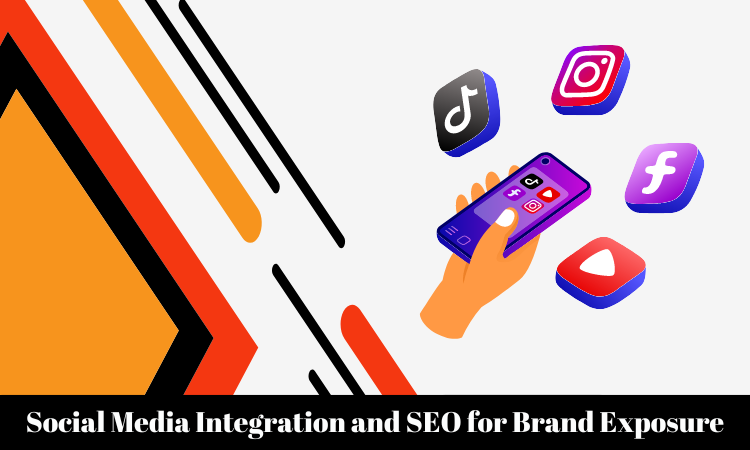
Aligning Social Media Profiles with SEO Goals
Consistency across digital platforms is key. Here, we discuss the importance of aligning social media profiles with SEO goals, creating a unified online presence that reinforces the brand’s identity.
Harnessing the Power of Social Signals for Search Engine Rankings
Social signals, such as likes and shares, are integral to modern SEO. This subheading explores how social engagement not only enhances search engine rankings but also serves as a testament to a brand’s popularity and relevance.
Encouraging Social Sharing for Increased Brand Reach
Word-of-mouth has gone digital. This section emphasizes the role of social sharing in expanding brand reach, and turning satisfied customers into brand advocates through online sharing.
Local SEO Tactics for Regional Branding
For brands with a local footprint, optimizing for local search is paramount. This section explores tactical approaches to enhance brand visibility and credibility within specific geographic regions.
Optimizing Local Business Listings for Brand Visibility
Local business listings are a gateway to local audiences. This subheading guides brands on optimizing these listings, ensuring accurate information and enhanced visibility for users searching within a specific locality.
Garnering Positive Online Reviews for Local Credibility
Online reviews wield significant influence. This section delves into the importance of positive online reviews for local credibility and outlines strategies to actively encourage and manage reviews.
Targeting Location-Specific Keywords to Capture Local Audiences
Tailoring content to local audiences is an art. Here, we explore the significance of targeting location-specific keywords, ensuring that the brand surfaces prominently when users search for products or services in a particular location.
In conclusion, the article unfolds a comprehensive roadmap for brands seeking to leverage SEO for effective branding. From understanding the core role of SEO in brand recognition to mastering key elements and strategies, this guide equips brands with the knowledge needed to navigate the dynamic digital landscape successfully.
Mobile Optimization for Brand Accessibility
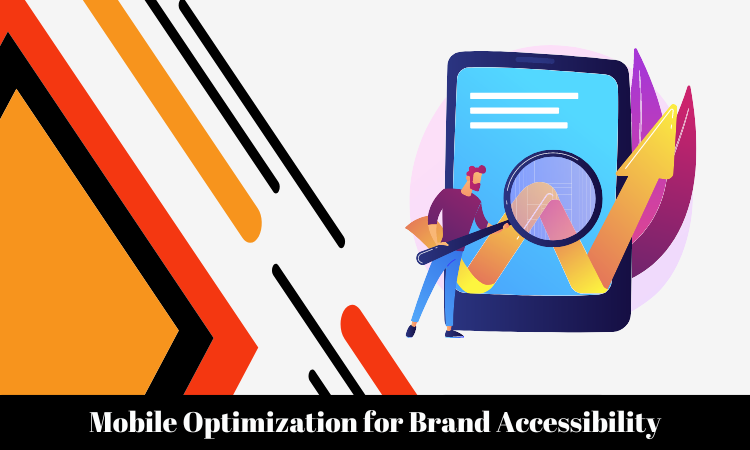
In the ever-evolving landscape of digital marketing, mobile optimization has become a non-negotiable element for brands striving to enhance accessibility and visibility. As users increasingly turn to their mobile devices for online interactions, ensuring a seamless mobile user experience has become a critical aspect of brand consistency. This article explores the multifaceted role of mobile optimization in brand accessibility, its impact on SEO, the advent of mobile-first indexing, and how monitoring and measuring success through SEO can refine branding strategies.
Ensuring a Seamless Mobile User Experience for Brand Consistency
In the era of smartphones and tablets, brands must prioritize delivering a seamless experience across all devices. From responsive web design to intuitive mobile interfaces, providing a consistent user experience fosters brand trust and engagement. In this section, we’ll delve into the importance of responsive design, mobile-friendly navigation, and the visual appeal of a brand on smaller screens.
Mobile-Friendly Website Design and Its Impact on SEO
The correlation between mobile-friendliness and search engine rankings cannot be overstated. Search engines, particularly Google, prioritize mobile-friendly websites in their rankings. We’ll explore the technical aspects of mobile optimization, such as page load speed, mobile-friendly design elements, and the impact of these factors on SEO performance.
Mobile-First Indexing and Its Implications for Brand Visibility
With Google’s shift towards mobile-first indexing, the mobile version of a website takes precedence in search engine rankings. Brands need to understand the implications of this shift and adapt their strategies accordingly. We’ll discuss how mobile-first indexing works, its impact on search rankings, and the steps brands can take to optimize for this mobile-centric approach.
Monitoring and Measuring Branding Success through SEO
Efficient monitoring and measurement are integral to any successful branding strategy. This section explores the use of key performance indicators (KPIs) to gauge brand recognition. We’ll delve into various KPIs relevant to SEO, such as organic traffic, click-through rates, and conversion rates. Understanding how to interpret these metrics provides brands with valuable insights into their online performance.
Utilizing Key Performance Indicators (KPIs) for Brand Recognition
Identifying and tracking KPIs specific to brand recognition allows marketers to measure the impact of their SEO efforts. We’ll explore KPIs such as brand mentions, brand visibility in search results, and social media engagement, highlighting their significance in assessing brand recognition and resonance.
Analyzing SEO Metrics to Assess Brand Visibility
SEO metrics provide a comprehensive view of a brand’s online visibility. From keyword rankings to backlink profiles, analyzing these metrics aids in understanding how well a brand is positioned in the digital landscape. This section will guide readers through the critical SEO metrics and how to interpret them in the context of brand visibility.
Making Data-Driven Decisions to Refine Branding Strategies
Data-driven decision-making is essential for refining branding strategies over time. By examining the insights gained from monitoring KPIs and SEO metrics, brands can make informed decisions to optimize their online presence. We’ll discuss the iterative process of refining strategies based on data and adapting to changing market dynamics.
Case Studies: Successful Branding Campaigns with SEO
Real-world examples provide invaluable lessons for brands aiming to leverage SEO for successful branding. This section will showcase case studies of brands that have effectively used SEO-driven strategies to enhance their visibility, engagement, and overall brand perception. By examining these success stories, readers can extract actionable insights for their own branding strategies.

Examining Real-World Examples of Brands Using SEO Effectively
Through detailed case studies, we’ll explore how brands across various industries have harnessed the power of SEO to achieve tangible results. From increased organic traffic to improved conversion rates, these examples will showcase the diverse ways in which SEO can be a game-changer for brand visibility.
Learning from Successful SEO-Driven Branding Campaigns
Each case study will provide a deep dive into the specific tactics employed by successful brands. Whether it’s content optimization, link-building strategies, or social media integration, readers will gain a nuanced understanding of the elements that contribute to SEO-driven branding success.
Extracting Actionable Insights for Your Brand Strategy
The ultimate goal of examining case studies is to extract actionable insights that can be applied to individual brand strategies. By distilling the lessons learned from successful campaigns, brands can tailor their approaches to align with their unique goals, industries, and target audiences.
Future Trends in SEO for Branding
Anticipating future trends in SEO is crucial for staying ahead of the competition. This section will explore emerging technologies, evolving search engine algorithms, and other trends that are likely to shape the future of SEO for branding.

Anticipating and Adapting to Evolving Search Engine Algorithms
Search engines continually evolve their algorithms to deliver more relevant and user-friendly results. Brands must stay informed about these changes to adapt their SEO strategies accordingly. We’ll discuss upcoming trends in search engine algorithms and how brands can prepare for and navigate these changes.
Embracing Emerging Technologies for Enhanced Brand Exposure
Technological advancements, such as voice search, artificial intelligence, and augmented reality, are influencing the way users interact with online content. Brands that embrace these emerging technologies can gain a competitive edge in terms of brand exposure. This section explores how SEO strategies can incorporate and capitalize on these technological shifts.
Staying Ahead of the Curve in the Dynamic Landscape of SEO
SEO is a dynamic field that requires continuous learning and adaptation. This section offers insights into how brands can stay ahead of the curve by staying informed about industry updates, participating in ongoing education, and actively testing and refining their SEO strategies.
Conclusion: Harnessing the Full Potential of SEO for Lasting Brand Recognition
Summarizing the extensive exploration of mobile optimization, monitoring and measuring success through SEO, case studies, and future trends, the conclusion emphasizes the key takeaways for effective brand building through SEO.
Summarizing the Key Takeaways for Effective Brand Building through SEO
Highlighting the crucial points discussed throughout the article, the conclusion provides a concise summary of the key takeaways. This includes the importance of mobile optimization, the significance of monitoring KPIs and SEO metrics, learning from successful case studies, and preparing for future trends.
Emphasizing the Continuous Nature of SEO Efforts for Sustained Brand Visibility
The article concludes by stressing the continuous nature of SEO efforts. Building and maintaining brand recognition through SEO is an ongoing process that requires adaptability, analysis, and a commitment to staying current with industry trends. By understanding the dynamic nature of SEO, brands can position themselves for lasting success in the competitive digital landscape.
9 Easy Practices to Increase Revenue with Website Organic Traffic
In the dynamic landscape of online business, the importance of organic traffic cannot be overstated. It serves as the lifeblood of a website, bringing in visitors who are actively seeking products, services, or information. While paid advertising can provide a quick boost, organic traffic is a sustainable force that can significantly impact a website’s revenue over the long term.
This article explores nine easy practices that can help businesses increase revenue by optimizing their websites for organic traffic. From content optimization to social media strategies, these practices encompass a holistic approach to improving visibility, engagement, and ultimately, conversion rates.
Optimizing Content for Search Engines
Keyword Research and Integration
Keyword research is the foundation of any successful SEO strategy. Identifying the right keywords allows businesses to understand what their target audience is searching for. Tools like Google Keyword Planner and SEMrush can assist in finding relevant keywords with a balance of search volume and competition.
Once keywords are identified, integration into content is crucial. Strategic placement in titles, headers, and throughout the body of the content helps search engines understand the relevance of the page to user queries. However, it’s important to maintain a natural and reader-friendly flow, avoiding keyword stuffing that can harm the user experience.
Implementing SEO Best Practices
Crafting high-quality content is at the core of SEO success. Content should be informative, engaging, and provide real value to the audience. In addition to textual content, multimedia elements like images, videos, and infographics can enhance the overall user experience.
Implementing on-page SEO best practices involves optimizing meta titles, meta descriptions, and image alt text. These elements not only help search engines understand the content but also contribute to higher click-through rates when users see the website in search results.
Enhancing User Experience for Higher Engagement
Mobile Optimization
With the increasing use of smartphones, mobile optimization is no longer optional. Google prioritizes mobile-friendly websites in its search rankings, making it essential for businesses to ensure their websites are responsive and provide a seamless experience across devices.
Mobile optimization includes considerations for page layout, font sizes, and touch-friendly navigation. Ensuring that users can easily access and navigate the website on their mobile devices enhances both the user experience and search engine rankings.
Fast Loading Times
Website speed is a critical factor in user satisfaction and search engine rankings. Slow-loading pages can lead to higher bounce rates, negatively impacting the website’s performance in search results.
Optimizing images, leveraging browser caching, and using content delivery networks (CDNs) are effective strategies to improve loading times. Regular performance audits and optimizations contribute to a positive user experience, encouraging visitors to stay and explore the website.
User-Friendly Navigation
A well-designed and intuitive navigation structure is key to keeping users engaged. Clear menus, logical categorization, and a straightforward path to relevant information contribute to a positive user experience.
Effective navigation not only benefits users but also helps search engines crawl and index the website more efficiently. Implementing breadcrumb trails and ensuring that every page is accessible within a few clicks from the homepage enhances the overall usability of the site.
Harnessing the Power of Social Media
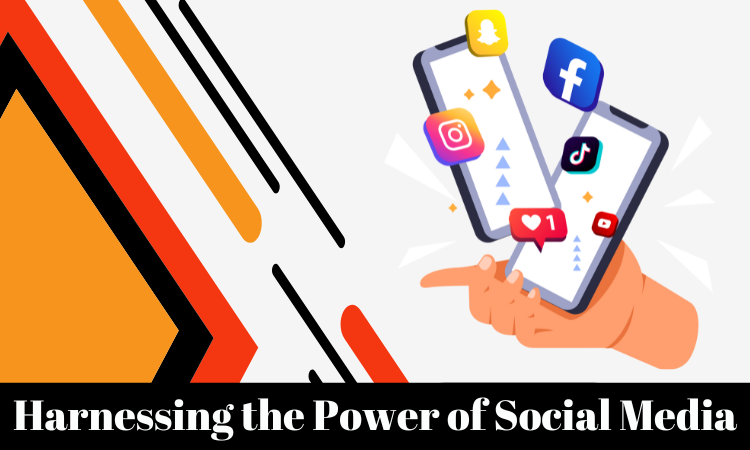
Sharing Engaging Content
Social media platforms provide an opportunity to amplify the reach of your content. Creating shareable content encourages users to distribute it within their networks, expanding the visibility of your brand.
Engaging content can take various forms, including blog posts, infographics, videos, and interactive polls. Understanding the preferences of your target audience on different social platforms helps tailor content for maximum impact.
Building a Strong Social Media Presence
Consistency is key when building a social media presence. Regularly updating profiles, sharing relevant industry news, and actively engaging with followers contribute to a positive and dynamic image.
Each social media platform has its unique strengths and user demographics. Tailoring content to suit the specific audience and trends of each platform ensures that the brand’s message resonates effectively.
Building a Robust Backlink Profile
Backlinks remain a crucial factor in search engine algorithms, acting as “votes of confidence” from other websites. Building a robust backlink profile involves acquiring high-quality links from reputable sources within your industry.
Strategies such as guest posting, influencer collaborations, and participation in industry forums contribute to a diverse and authoritative backlink profile. It’s important to focus on quality over quantity, as low-quality or spammy backlinks can have a detrimental impact on SEO.
Natural Link-Building Strategies
Encouraging natural link-building involves creating content that others in the industry naturally want to link to. This could include in-depth research, unique insights, or compelling visuals that serve as a valuable resource for others.
Engaging with industry communities, sharing insights, and participating in discussions can organically lead to others referencing and linking to your content. Natural link-building not only enhances SEO but also establishes your website as an authoritative source in your field.
Guest Posting and Collaboration
Collaborating with influencers, industry leaders, or other businesses through guest posting can significantly expand your reach. By contributing valuable content to other websites, you not only tap into their audience but also earn authoritative backlinks that enhance your website’s SEO.
When pursuing guest posting opportunities, it’s important to choose reputable and relevant platforms. Craft content that aligns with the host site’s audience and provides genuine value. This collaborative approach benefits both parties by fostering cross-promotion and establishing authority within the industry.
Monitoring and Disavowing Harmful Links
Regularly monitoring your backlink profile is essential for maintaining a healthy online presence. Tools like Google Search Console and third-party services can help identify any harmful or spammy backlinks that may negatively impact your SEO.
The Google Disavow tool enables website owners to inform the search engine that they do not want to be associated with any particular harmful links. This proactive approach helps mitigate the potential damage to your website’s SEO.
In conclusion, the combination of these nine practices provides a comprehensive strategy for increasing revenue through website organic traffic. By optimizing content for search engines, enhancing the user experience, and leveraging the power of social media and backlinks, businesses can create a robust online presence that attracts and retains valuable visitors. As the digital landscape continues to evolve, staying informed about the latest SEO trends and adapting strategies accordingly is crucial for sustained success in the competitive online market.
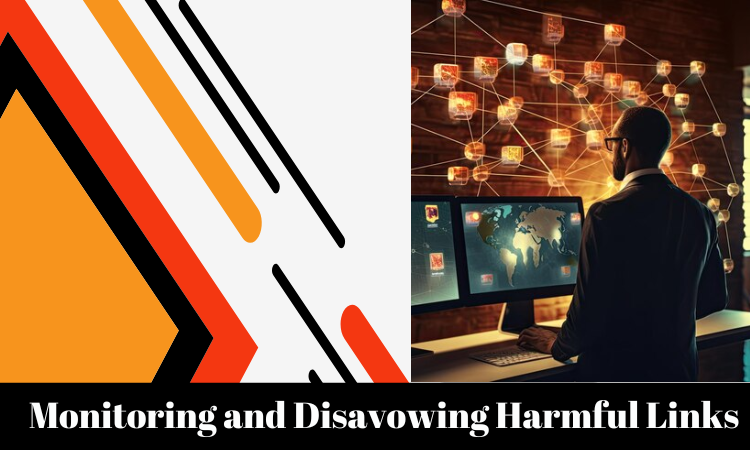
Google My Business Optimization:
A cornerstone of local SEO is optimizing your Google My Business (GMB) listing. Complete your profile with accurate business information, including your address, phone number, business hours, and relevant categories. Regularly update your GMB profile with fresh content, images, and any changes to business details.
Local Keywords and Citations:
Integrate location-specific keywords naturally into your website’s content and metadata. This helps search engines understand your geographical relevance. Additionally, ensure consistent business information across online directories and platforms. These citations play a crucial role in local search rankings.
Encouraging Customer Reviews:
Positive customer reviews not only build trust but also impact local search rankings. Encourage satisfied customers to leave reviews on platforms like Google, Yelp, and Facebook. Respond to reviews promptly, addressing both positive and negative feedback to demonstrate your commitment to customer satisfaction.
Regularly Updating and Refreshing Content:
Search engines favor websites that regularly update their content. Develop a content calendar to keep your website fresh and engaging. This could include blog posts, news updates, or any other relevant information that adds value to your audience.
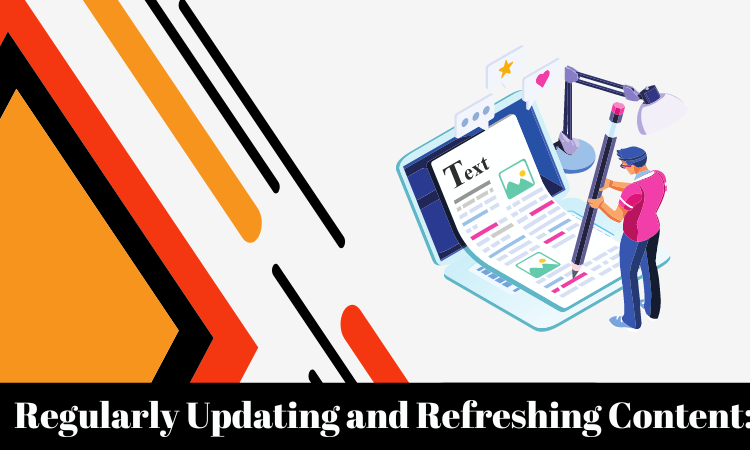
Importance of Fresh Content for SEO:
Fresh content signals to search engines that your website is active and relevant. It also provides opportunities to target new keywords and capture a broader audience. Regularly publishing fresh content can positively impact your search rankings and keep your audience engaged.
Updating Evergreen Content:
While creating new content is essential, don’t neglect your evergreen content – timeless pieces that remain relevant over time. Regularly update and enhance these articles to ensure accuracy and usefulness, signaling to search engines that your content is current and reliable.
Content Audits and Maintenance:
Perform regular content audits to identify outdated or underperforming content. Remove or update obsolete information and ensure that all content aligns with your current SEO and business goals.
Utilizing Analytics for Informed Decisions:
Implementing analytics tools like Google Analytics provides valuable insights into your website’s performance. Track key metrics such as website traffic, user behavior, and conversion rates to make data-driven decisions.
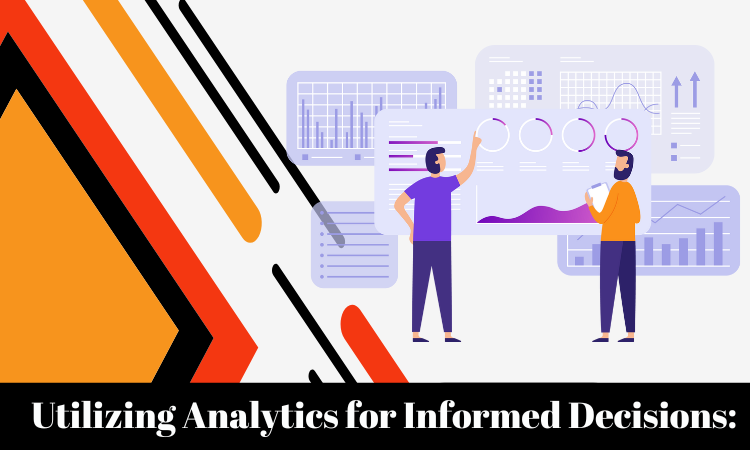
Setting Up and Monitoring Analytics Tools:
Ensure proper setup of analytics tools and regularly monitor their performance. This includes setting up goals, tracking conversions, and understanding user journeys on your website.
Analyzing User Behavior and Trends:
Deep dive into user behavior data to understand how visitors interact with your site. Identify popular pages, entry points, and areas for improvement. Analyzing trends helps you align your content strategy with user preferences.
Adjusting Strategies Based on Data Insights:
Use the insights gathered from analytics tools to adjust your SEO strategies. Focus on what works and refine areas that may need improvement. A data-driven approach ensures you stay agile in a dynamic online landscape.
Staying Informed About Algorithm Changes:
Search engine algorithms continually evolve, impacting search results and SEO strategies. Stay informed about algorithm updates from major search engines like Google to adapt your tactics accordingly.
Keeping Abreast of Search Engine Updates:
Beyond algorithm changes, stay updated on general search engine updates, features, and best practices. This knowledge ensures your strategies align with the latest developments in the digital landscape.
Adapting Strategies to Algorithm Changes:
When algorithm changes occur, be prepared to adapt your strategies. This may involve tweaking your content, adjusting keywords, or modifying other elements of your SEO approach to maintain or improve your search rankings.
Future-Proofing Your SEO Efforts:
Anticipate future trends and changes in the digital marketing landscape. By staying ahead of the curve, you can future-proof your SEO efforts and position your business for sustained online success.
Conclusion:
In conclusion, the journey to increasing revenue through website organic traffic demands a strategic embrace of essential practices that synergize to elevate online presence and user engagement. By prioritizing content optimization for search engines and crafting high-quality, relevant material, businesses lay a solid foundation for attracting and retaining their target audience.
A seamless user experience, achieved through mobile optimization, swift loading times, and intuitive navigation, is pivotal in converting visitors into customers. The strategic use of social media not only expands brand visibility but also aligns with SEO goals, creating a harmonious digital ecosystem.
SEO Audit Essentials: A Practical Guide for Website Optimization
In the ever-evolving landscape of the digital world, having a strong online presence is crucial for the success of any business or individual. Search Engine Optimization (SEO) plays a pivotal role in ensuring that your website ranks highly on search engine results, driving organic traffic and potential customers. To achieve and maintain optimal SEO performance, regular SEO audits are essential. This comprehensive guide will walk you through the SEO audit essentials, providing practical insights and actionable steps to optimize your website effectively.
Understanding the Importance of SEO Audit
Search engines constantly update their algorithms, and staying ahead of the curve is vital for maintaining visibility in search results. An SEO audit serves as a diagnostic tool to evaluate the health of your website’s SEO and identify areas for improvement. By conducting regular audits, you can enhance your website’s performance, user experience, and overall online presence.
The Fundamentals EO Audit
1. Keyword Research and Analysis
Keywords are the foundation of SEO. Begin your audit by evaluating your current keyword strategy. Are you targeting the right keywords for your business or content? Use tools like Google Keyword Planner, SEMrush, or Ahrefs to identify relevant keywords with high search volumes. Ensure that your content aligns with these keywords to attract the right audience.
2. On-Page SEO Optimization
Review the on-page elements of your website, including title tags, meta descriptions, header tags, and URL structures. Optimize these elements to be concise, relevant, and keyword-rich. Ensure that each page has a unique title and meta description, and use header tags (H1, H2, H3) to structure your content logically.
3. Content Quality and Relevance
High-quality, relevant content is crucial for SEO. Evaluate the depth and uniqueness of your content. Update outdated information, fix broken links, and ensure that your content provides value to users. Google’s algorithms prioritize content that answers user queries comprehensively.
4. Mobile-Friendly Design
With the increasing use of mobile devices, having a mobile-friendly website is non-negotiable. Use Google’s Mobile-Friendly Test to ensure that your site is responsive and provides a seamless user experience across devices.
5. Site Speed and Performance
Page speed is a critical factor for both user experience and search engine rankings. Use tools like Google PageSpeed Insights to identify areas for improvement. Compress images, leverage browser caching, and minimize HTTP requests to enhance your website’s speed.
Advanced Techniques for Practical Website Optimization
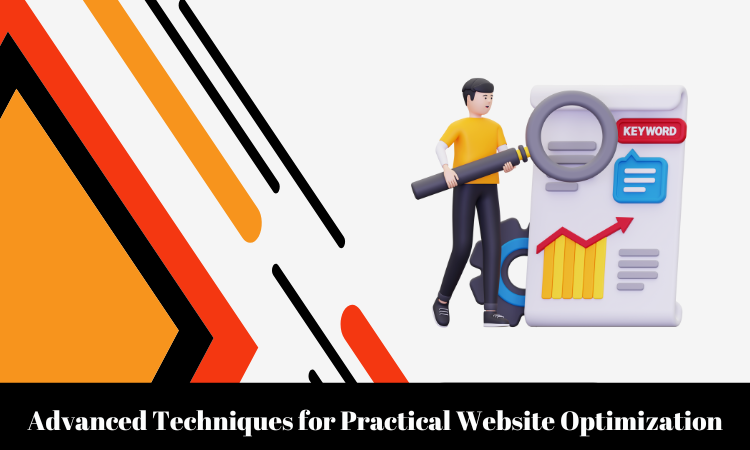
1. Technical SEO Analysis
Delve into the technical aspects of your website, including crawl errors, site structure, and XML sitemaps. Use tools like Google Search Console to identify and fix crawl issues, and ensure that your site architecture is logical and easily navigable.
2. Backlink Profile Evaluation
Backlinks are a powerful SEO factor, but quality matters more than quantity. Audit your backlink profile using tools like Moz or Ahrefs. Disavow toxic links and focus on building high-quality, relevant backlinks to improve your website’s authority.
3. User Experience (UX) Assessment
User experience is a key ranking factor. Analyze user behavior on your site using tools like Google Analytics. Ensure that your website is easy to navigate, with clear calls-to-action and an intuitive layout. Address any issues that may lead to high bounce rates or low user engagement.
4. Local SEO Optimization
For businesses with a physical presence, local SEO is paramount. Verify your Google My Business listing, ensure accurate NAP (Name, Address, Phone) information, and encourage customer reviews. Local SEO optimization enhances visibility in local searches, especially on mobile devices.
5. Schema Markup Implementation
Schema markup provides search engines with additional context about your content, improving the chances of rich snippets in search results. Implement schema markup for relevant content types, such as events, products, and reviews, to enhance your website’s visibility.
Website Performance Optimization Best Practices
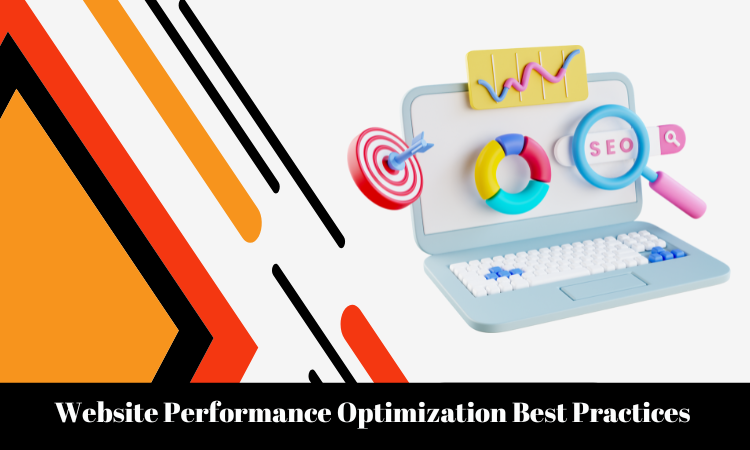
1. Server and Hosting Analysis
Your hosting provider has a significant impact on the performance of your website. Ensure that your server is reliable, and consider upgrading to a faster hosting plan if needed. Monitor server response times and address any issues affecting site performance.
2. Content Delivery Network (CDN) Integration
A CDN distributes your website’s content across multiple servers worldwide, reducing latency and improving page load times. Integrate a CDN to ensure that your website loads quickly for users across different geographical locations.
3. Image and Media Optimization
Large images and media files can slow down your website. Compress images without compromising quality and use lazy loading to ensure that images are loaded only when they come into the user’s viewport. This improves page load times and overall user experience.
4. Browser-Caching Implementation
Leverage browser caching to reduce load times for returning visitors. This involves storing static resources like images, CSS, and JavaScript files in the user’s browser, allowing them to be retrieved more quickly upon subsequent visits.
5. Minimize HTTP Requests
Every element on a webpage, such as images, scripts, and stylesheets, requires a separate HTTP request. Minimize the number of requests by combining or reducing unnecessary elements. This reduces load times and improves overall website performance.
Proven Techniques for Practical Website Optimization
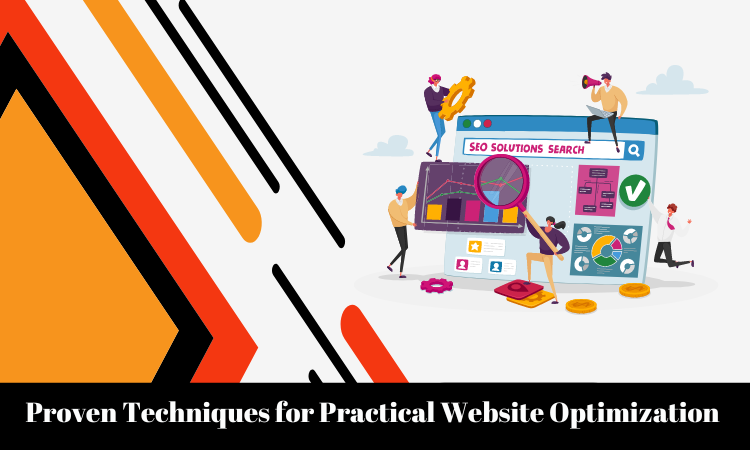
1. Regular Content Updates
Fresh and relevant content signals to search engines that your website is active and provides value. Regularly update and expand your content, addressing emerging trends or changes in your industry. This not only benefits SEO but also keeps your audience engaged.
2. Social Media Integration
Social signals are becoming increasingly important for SEO. Integrate social media sharing buttons on your website, and actively share your content on social platforms. Engage with your audience on social media to build a community around your brand.
3. Video Optimization
Video content is highly engaging and can improve your website’s SEO. Optimize video titles, descriptions, and tags with relevant keywords. Host videos on platforms like YouTube and embed them on your site to benefit from both video and universal search results.
4. Structured Data Markup
Structured data helps search engines understand the context of your content. Implement schema markup for different content types, such as articles, recipes, or events. This enhances the visibility of your content in rich snippets and other special search result features.
5. Conversion Rate Optimization (CRO)
Optimizing for conversions is not just about attracting traffic; it’s about turning that traffic into customers. Analyse user behaviour, conduct A/B testing, and optimize your website’s design and calls-to-action to improve conversion rates.
Conclusion
In the dynamic world of digital marketing, staying ahead of the competition requires continuous effort and adaptation. Conducting regular SEO audits is not just a best practice; it’s a necessity for maintaining and improving your website’s performance. By focusing on keyword optimization, on-page SEO, technical analysis, and performance optimization, you can create a robust foundation for success in the online realm.
As search engines continue to evolve, so should your SEO strategy. Embrace emerging trends, stay informed about algorithm updates, and be proactive in addressing issues identified during your audits. By following the practical tips and techniques outlined in this guide, you’ll be well-equipped to navigate the complexities of SEO and ensure that your website remains visible and competitive in search engine results.
Frequently Asked Questions (FAQs)
Q1: How often should I conduct an SEO audit?
A1: It’s recommended to conduct a comprehensive SEO audit at least once every six months. However, if you’ve recently made significant changes to your website or noticed a drop in rankings, it’s advisable to conduct an audit sooner.
Q2: Can I perform an SEO audit myself, or should I hire a professional?
A2: While basic SEO audits can be performed by website owners, hiring a professional SEO consultant or using specialized tools can provide a more in-depth analysis. Professionals have the expertise to identify and address complex issues.
Q3: What role do backlinks play in SEO, and how can I improve my backlink profile?
A3: Backlinks are crucial for SEO as they signal the authority and relevance of your content. Focus on acquiring high-quality backlinks from reputable sources in your industry. Regularly audit your backlink profile to disavow any toxic links.
Q4: How does mobile-friendliness impact SEO?
A4: Mobile-friendliness is a significant ranking factor for search engines. With the increasing use of mobile devices, a mobile-friendly website ensures a positive user experience, leading to improved rankings in mobile search results.
Q5: What is the role of social media in SEO?
A5: Social signals, such as likes, shares, and comments, are considered by search engines as indicators of content relevance. Integrating social media into your SEO strategy can enhance your online presence and drive traffic to your website.

